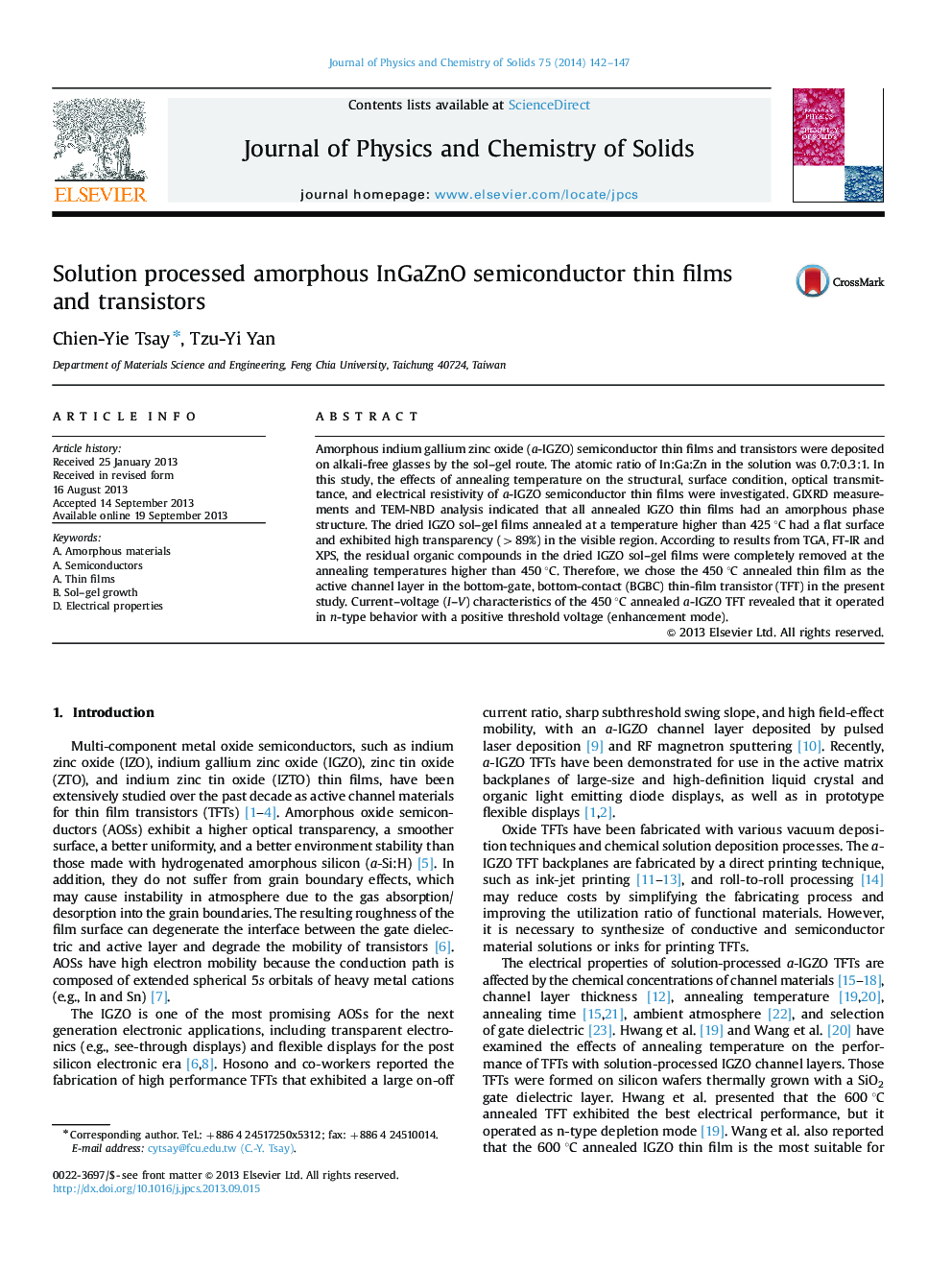| Article ID | Journal | Published Year | Pages | File Type |
|---|---|---|---|---|
| 1515960 | Journal of Physics and Chemistry of Solids | 2014 | 6 Pages |
•Amorphous IGZO thin films and transistors were fabricated by the sol–gel method.•GIXRD and TEM-NBD analysis indicated that the IGZO thin films had an amorphous phase.•The a-IGZO TFTs exhibited n-channel behavior and operated in the enhancement mode.
Amorphous indium gallium zinc oxide (a-IGZO) semiconductor thin films and transistors were deposited on alkali-free glasses by the sol–gel route. The atomic ratio of In:Ga:Zn in the solution was 0.7:0.3:1. In this study, the effects of annealing temperature on the structural, surface condition, optical transmittance, and electrical resistivity of a-IGZO semiconductor thin films were investigated. GIXRD measurements and TEM-NBD analysis indicated that all annealed IGZO thin films had an amorphous phase structure. The dried IGZO sol–gel films annealed at a temperature higher than 425 °C had a flat surface and exhibited high transparency (>89%) in the visible region. According to results from TGA, FT-IR and XPS, the residual organic compounds in the dried IGZO sol–gel films were completely removed at the annealing temperatures higher than 450 °C. Therefore, we chose the 450 °C annealed thin film as the active channel layer in the bottom-gate, bottom-contact (BGBC) thin-film transistor (TFT) in the present study. Current–voltage (I–V) characteristics of the 450 °C annealed a-IGZO TFT revealed that it operated in n-type behavior with a positive threshold voltage (enhancement mode).
Graphical abstractFigure optionsDownload full-size imageDownload as PowerPoint slide
